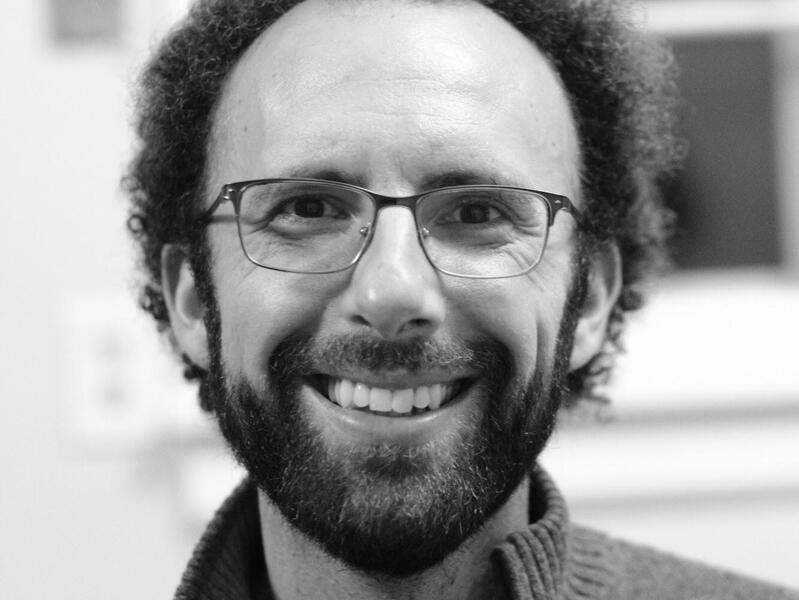May 25, 2001
VCU medical resident coordinates high-altitude life-saving effort
Share this story
RICHMOND, Va. – Looking back, Shawn Borich said the scenario was similar to what he sees in VCU’s emergency department everyday – a critically ill person needing urgent medical attention. The only difference was that Borich’s working environment was traveling at roughly 600 miles an hour, 35,000 feet above the Atlantic Ocean.
"It was like being in an emergency room in the wilderness," said Borich, M.D., a first-year resident in the Department of Emergency Medicine at VCU’s MCV Hospitals. "I didn’t have access to my usual resources – faculty physicians, an extensive pharmacy, first-class medical equipment."
Borich and his medical school roommate, Tyler Koski, M.D., who is now a first-year resident in neurosurgery at Northwestern Memorial Hospital in Chicago, were flying home after a week’s vacation in Amsterdam, the Netherlands. On their April 15 flight, an overhead page went out requesting medical assistance.
"We didn’t give it a second thought when we heard the call; we wanted to see if there was anything we could do," Borich said. When they arrived near the front of the plane, they found a man on the floor thrashing with convulsions.
Only several months into his emergency medicine training, Borich had observed and performed many life-saving techniques in the well-equipped, supervised setting of VCU’s emergency department. But now, he was faced with a critical situation, with only minimal medical supplies.
"I was focusing on the immediate needs of the patient. I was nervous, yet comfortable – this is what I’m training to do."
Because of his experience with similar situations in the emergency department, Borich took the lead in the initial treatment of the patient. Using medication from the airplane’s medical supply kit, Borich injected Valium in an attempt to stop the convulsions.
"In our emergency department, we usually use a different drug in this situation, so I wasn’t sure of the precise dosage for Valium, but I have an extensive list of medications in my Palm Pilot – so I looked it up." Just as Borich began injecting the Valium, the patient’s convulsions gave way to seizures.
By this time, a nurse and cardiac technician had joined Borich and Koski, and the four discussed treatment options each step of the way. They started intravenous fluids and placed a tube down the patient’s throat to open his airway. They also hooked up a small heart monitor.
"Everyone was pitching in," said Borich. "Passengers were passing up all sorts of medications and pillows. I had a passenger sitting nearby write down everything we were doing to help the patient. A 15 year-old boy even brought me his portable glucose monitor so I could check the patient’s blood sugar."
The seizures eventually stopped, but shortly afterward, so did the patient’s heart.
"I just kept thinking about what I’ve been taught…the ABCs – airway, breathing, circulation – and everything we can do to support the patient."
After injecting medication to treat the heart, Borich began CPR while Koski pushed air into the patient’s lungs through a manual ventilator bag. Minutes later, with no pulse or response to CPR, Borich reached for the automatic external defibrillator to shock the patient’s heart. After two defibrillations, the heartbeat resumed.
Now, with only an irregular heartbeat and no fluid left in the IV bag to push medications into the body, Borich had to inject epinephrine into a vein in the patient’s neck. Minutes later the heart returned to a normal rhythm.
"We used almost all of the equipment in the medical kit. I don’t know what we would have done if the patient hadn’t responded."
Three-and-a-half hours after they began treatment, they had finally stabilized the patient. And that’s when Borich became concerned about a new challenge.
"The pilot had asked me earlier if we needed to make an emergency landing and I said yes – but we were still two hours from the nearest airport and since we did not know the full extent of what was wrong with the patient, I wasn’t sure he would make it that long."
The plane diverted from its original destination in Detroit and landed in Goose Bay, Newfoundland, Canada, where paramedics were waiting. Borich and Koski rode to the hospital to transfer the care of their patient. They returned to their plane a short time later to a standing ovation.
"It made me feel good. People were shaking our hands and offering us and candy – the flight attendants moved us to first class." Borich eventually made it to Richmond in time to report for work at seven the next morning.
"We’re very proud of all of our residents, but Shawn has made us
especially proud," said Joseph P. Ornato, M.D., chairman of the Department
of Emergency Medicine. "There are very few first year residents in any
specialty from any program in the country that could have run a resuscitation
above the North Atlantic as competently as he did!"
In the days that followed, Borich learned that despite his efforts, the
patient he and so many others on Flight 47 had tried to save did not survive.
According to news reports, the man
was a law professor at Wayne State University in Detriot, MI. His death, Borich learned, was not the result of food poisoning or an illness, but rather a drug overdose, caused when six of thirteen cocaine-filled balloons the patient was smuggling burst in his stomach.
"Looking back, with the benefit of the emergency department faculty and my textbooks, I believe that we did all we could for the patient. I wish things could have turned out differently, but I’d gladly respond to that overhead page again. I’ve chosen to be a doctor; it’s not something that I can just turn off when I go on vacation."
Subscribe to VCU News
Subscribe to VCU News at newsletter.vcu.edu and receive a selection of stories, videos, photos, news clips and event listings in your inbox.









